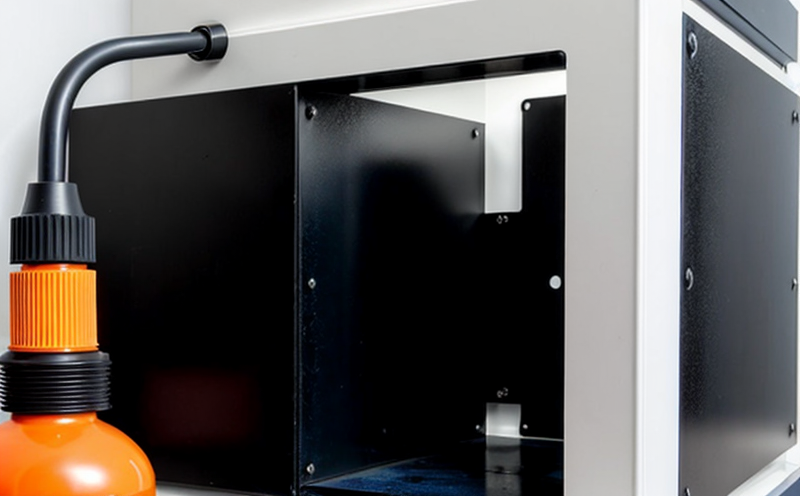ISO 8130 Electrostatic Properties of Powder Nanocoatings
The International Organization for Standardization (ISO) has developed ISO 8130, which provides a standardized method to determine the electrostatic properties of powder nanocoatings. This is particularly critical in sectors where static charge can impact product performance, safety, and quality.
This ISO standard outlines procedures for measuring electrostatic charge on powders, including nanocoatings, using various techniques. The focus is on understanding how electric charges behave when applied to these materials under different environmental conditions. Such knowledge is essential for industries dealing with powder-based products such as pharmaceuticals, paints, and coatings.
Testing the electrostatic properties of powder nanocoatings involves several stages: sample preparation, charging procedures, measurement methods, and data interpretation. Each step requires precise handling to ensure accurate results that reflect real-world conditions accurately. For instance, in pharmaceutical applications, controlling static charge can prevent particle agglomeration or even contamination issues.
The ISO 8130 procedure typically begins with the selection of appropriate charging equipment suitable for generating controlled electric fields around the powder samples. Subsequently, the sample needs to be prepared carefully according to specified guidelines provided in the standard document. Proper preparation ensures uniform distribution and minimal disturbance during measurement.
During testing, it's crucial to maintain consistent environmental factors like temperature, humidity, and pressure levels since these can significantly influence electrostatic behavior. Appropriate shielding measures must also be implemented to minimize external interference from stray electrical charges.
Data analysis plays a vital role in interpreting the test outcomes correctly. By comparing measured values against predefined thresholds specified by ISO 8130, manufacturers can assess whether their products meet industry standards or face potential quality issues that need addressing promptly.
In summary, adhering to ISO 8130 ensures reliable determination of electrostatic properties for powder nanocoatings, thereby enhancing product reliability and safety across diverse industrial sectors. Understanding these parameters helps developers optimize formulation processes while maintaining regulatory compliance.
Industry Applications
The application of ISO 8130 in various industries underscores its significance beyond mere laboratory testing; it serves as a cornerstone for ensuring consistent quality and performance in end products. In the pharmaceutical sector, controlling static charges helps maintain optimal particle size distribution during production processes, which is crucial for drug efficacy.
- Pharmaceuticals: Ensuring uniform dosage form characteristics.
- Paint & Coatings: Minimizing dust generation and improving application consistency.
- Electronics: Preventing damage from static discharge during manufacturing.
- Food Processing: Avoiding contamination by maintaining controlled environments.
These applications highlight the broader impact of electrostatic properties measurement on overall product quality and safety. By leveraging ISO 8130, manufacturers can enhance their competitive edge through superior performance metrics and better customer satisfaction levels.
Competitive Advantage and Market Impact
Compliance with international standards like ISO 8130 offers significant benefits for companies operating in the nanocoatings market. It demonstrates commitment to quality assurance practices, thereby boosting customer confidence and trust.
Achieving compliance through rigorous testing according to ISO 8130 ensures that products consistently meet required specifications regardless of where they are manufactured or sold globally. This alignment with global standards facilitates easier entry into international markets without compromising on local regulatory requirements.
Moreover, adherence to such standards sets a benchmark for innovation within the industry by encouraging continuous improvement in technology and process optimization efforts. Companies leading this charge not only gain recognition but also attract top talent seeking opportunities at forward-thinking organizations.
The ability to provide accurate electrostatic property data based on ISO 8130 can differentiate your company from competitors who may lack comparable expertise or resources. This competitive advantage translates into higher sales volumes, enhanced brand reputation, and long-term sustainability within the marketplace.
Use Cases and Application Examples
Let's explore some practical use cases where ISO 8130 plays a critical role:
- Pharmaceutical Manufacturing: Ensuring consistent particle size for optimal drug delivery.
- Coating Applications: Improving adhesion and reducing surface tension.
- Electronics Assembly: Preventing static-induced damage during delicate operations.
- Packaging Industry: Maintaining cleanliness in sterile environments to avoid contamination risks.
In these scenarios, accurate electrostatic property measurements ensure that nanocoatings perform optimally under various operating conditions. For instance, in electronics assembly, minimizing static discharge prevents short circuits and ensures smooth workflow efficiency.





